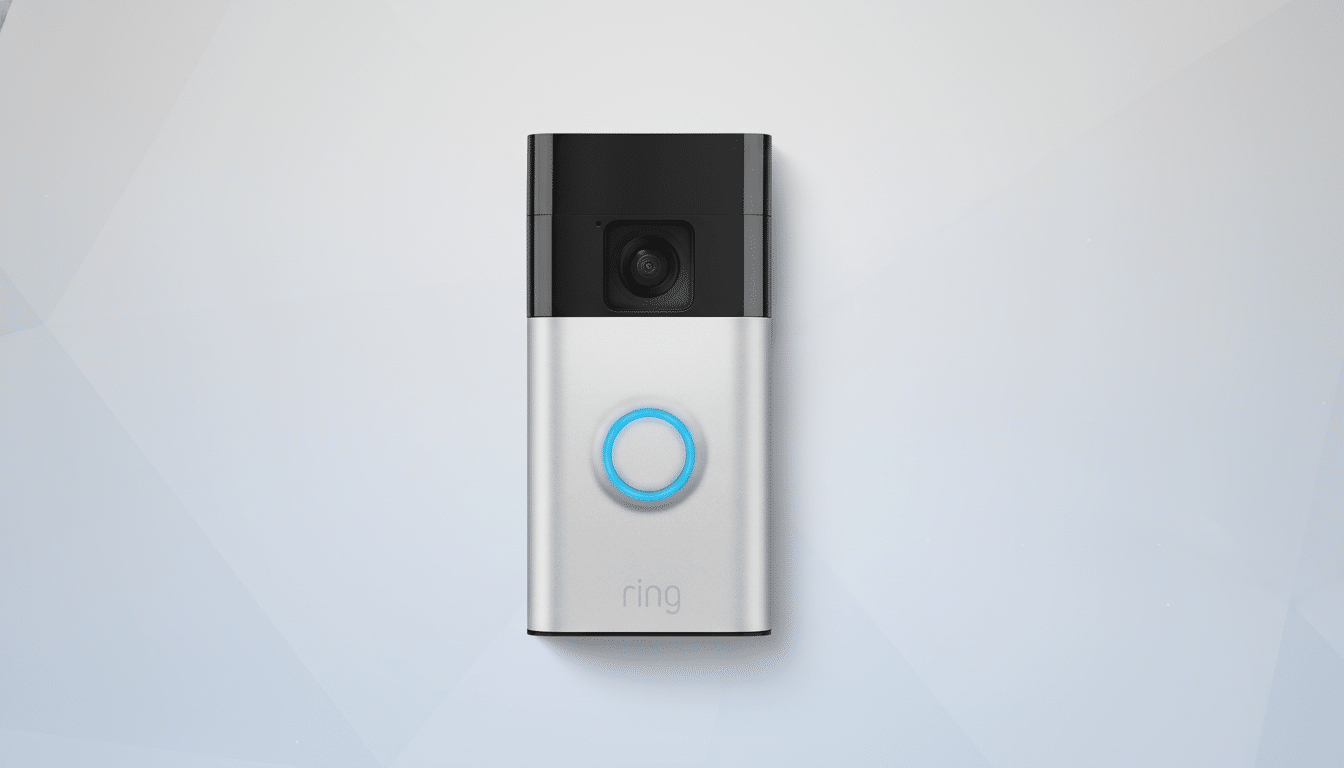Every one of the three Ring Battery Doorbell models has fallen to an all-time low price, making right now a great opportunity to level up security for less.
The details:

- Ring Battery Doorbell: $49.99 ($50 off the usual $99.99)
- Ring Battery Doorbell Plus: $79.99 ($70 off the usual $149.99)
- Ring Battery Doorbell Pro: $129.99 ($70 off the usual $199.99)
In more practical terms, that’s 50% off the base model (it’s normally $99.99), about 47% off the Plus version, and roughly 35% off for Pro-tier buyers.
Record-Low Pricing, by the Numbers for Each Doorbell
The standard Ring Battery Doorbell, usually $99.99, now costs $49.99 as part of a Black Friday sale (if you can call it that) open to all shoppers. It records 1,440 x 1,440 video and features head-to-toe framing, a 150-degree field of view, as well as motion alerts, two-way talk, and color night vision.
The Ring Battery Doorbell Plus falls to $79.99 from $149.99. It bumps up video to 1536p while maintaining the wide 150-degree view and color night vision. Its most important addition, though, is a quick-release, swappable battery allowing you to keep the doorbell up and running with minimal downtime while swapping batteries.
The Ring Battery Doorbell Pro is going for $129.99, compared with its previous price of $199.99. It shares the 1536p resolution and wide field of view, but adds premium hardware and software: 3D Motion Detection, Bird’s Eye View mapping, better low-light clarity, pre-roll video, better audio quality, and dual-band Wi-Fi to help keep a more stable connection.
Note: The Plus and Pro deals require a Prime membership. The deal for the base model is available to all.
Feature Differences That Matter Most for Buyers
Removable battery vs. sealed pack is the biggest love-it-or-hate-it quality-of-life divider. The base model should have the entire unit recharged every three to five months depending on motion activity and temperature. Both the Plus and Pro feature quick-release packs, so downtime is kept to an absolute minimum, while power management isn’t really a concern if you’ve got a backup on standby.
On video, all three bring square-ish frames that help capture full bodies and packages on the ground. 1536p video from the Plus and Pro looks notably sharper, which could be essential when trying to identify faces in mixed lighting.
The Pro’s radar-enabled 3D Motion Detection and Bird’s Eye View set another bar for motion intelligence. Instead of depending on pixels alone, the radar tracks movement paths, letting you ignore false alerts like swaying branches and passing cars while presenting an overhead map of motion events. For homes in busy areas, on streets or with complex sightlines, that’s a meaningful upgrade.

Which Models Offer the Best Value for Your Home
The base model at $49.99 is a no-brainer for anyone looking for reliable alerts and live video without spending much money, especially renters/new buyers. The trade-off, as with most other things, is convenience: You’re not going to find setting up the whole unit tough or time-consuming, but it’s less seamless than just popping in a new battery.
The Plus at $79.99 is the one that most homes should get. You’re getting the higher resolution and a quick-release battery (a feature we find owners tend to appreciate most after a few months of use). That convenience adds up over years, if you plan on holding onto your doorbell for so long.
For power users and edge cases, the Pro at $129.99 is your pick. If your entry looks out onto a sidewalk or a crowded street, the radar-based motion accuracy, pre-roll video, and improved night vision can help slash nuisance alerts and provide you with more context when something does happen.
What to Consider Before You Buy a Ring Doorbell
Advanced features require a Ring Protect plan. Without a subscription, you will receive live view, motion alerts, and two-way talk but no saved recordings or rich smart alerts such as package detection. In the US, plans begin at $4.99 a month — that’s in line with what many video doorbell owners pay across the category, according to industry surveys.
Battery life depends on settings, traffic, and climate. Figure on a couple of months per charge in typical suburban use with motion zones tuned. Run times are shortened in cold weather, so a spare quick-release pack is cheap insurance if you go Plus or Pro.
If you’re comparing one to other options, just be aware that some competitors put the most focus on local storage to avoid subscription fees, while others prioritize being part of the Google Assistant or HomeKit ecosystems. At this price, though, the combination of hardware, app maturity, and ecosystem integrations makes this trio stand out.
Why This Sale Is Important for Smart Home Shoppers
Deep discounts sitewide for just about any catalog are rare without the pressure of a big sale date, so seeing all three battery models hit their lowest price ever at once is worth noting. And for shoppers waiting on a trigger, this hits the marks: deep discounts, differentiation in models, and headroom to add a service subscription later if you need it.
Bottom line: If you want the simplest upgrade, get the base model; if you want the best long-term compromise between features and convenience, consider the Plus; if you need pro-grade motion precision and the richest feature set available, $129.99 for Pro is the cheapest way to avoid throwing money at things not meant to receive it.

